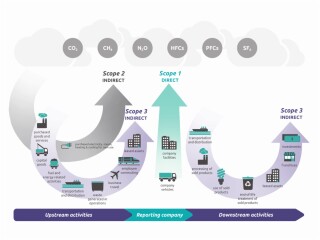With the EU’s Corporate Sustainability Reporting Directive legislation coming into effect soon, measuring and reporting carbon emissions is a growing issue for hire companies.
The ERA has turned to management consultants from KPMG to tell its members how to do it.
European Rental Association secretary general Michel Petitjean said: "There is currently no agreed methodology available for calculating the carbon footprint of equipment rental companies, who are today reporting on their carbon footprint in a way that is not harmonised and, therefore, not comparable between different companies. With this in mind, and in the context of the increasing legal and other pressures for companies to report on their sustainability performance, it is important to define a reference framework for the entire rental sector. This will not only be of benefit to the European industry, but will also set an example for equipment rental companies worldwide.”
The ERA carbon reporting guidance is expected to build on the methodology of its Equipment CO2 Calculator and include a list of greenhouse gas (GHG) protocol categories that are key for the rental sector, a methodology for calculating GHG emissions in all categories of scopes 1, 2 and 3 (particular attention will be paid to scope 3 categories) and a standard set of values for elements used in the methodology, including rental sector specific activity data and relevant emission factors.

Rental industry-specific operations that the guidance is expected to tackle include:
- Equipment use: To calculate the emissions generated by the use of the equipment it is necessary to track the duration of rental, as well as each type and size of equipment rented. This is then used to calculate the amount of fuel by its equipment while it is rented out to customers (fuel, electricity).
- Use of sold products: To calculate the emissions generated by the use of equipment once it has been sold and taken out of rental fleets, it is necessary to define a method for collecting the number of hours of use remaining and the average use of the equipment.
- Production of equipment: The emissions generated by the production of the equipment by an OEM.
- Maintenance and repairs: The emissions generated by the maintenance and repair of equipment. This includes emissions generated during the repair process.
- Transportation: The emissions generated by the transportation of the equipment to and from rental locations. This includes emissions from the outsourced delivery and pickup of equipment (scope 3), as well as emissions generated by the rental company’s own transportation fleet (scope 1).
- Waste disposal: The emissions generated by the disposal of waste generated by rental equipment. This includes emissions from the disposal of used oil and filters, as well as from the disposal of scrap metal and other waste materials.
Got a story? Email news@theconstructionindex.co.uk




